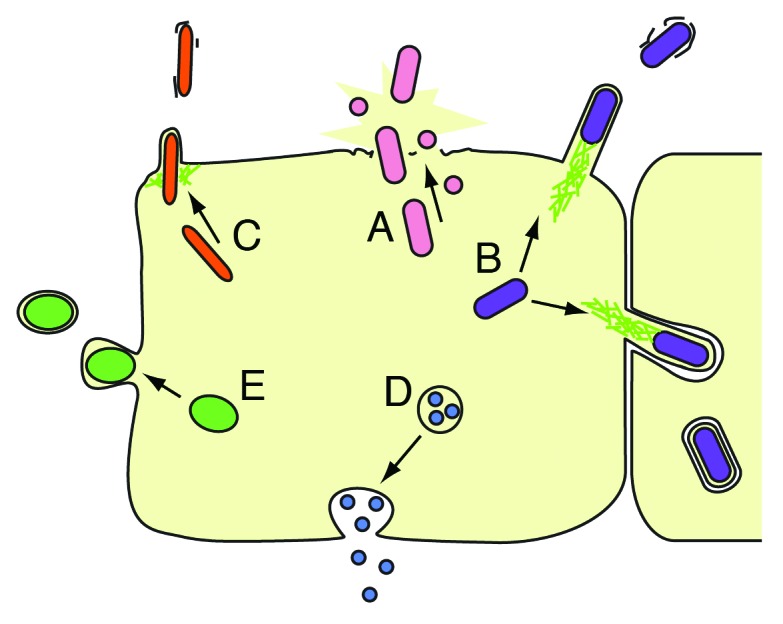
Figure 1. Exit strategies of intracellular pathogens. (A) Lytic exit from host cells through activation of “pyroptosis,” secretion of membrane pore-forming toxins, or secretion of proteases. (e.g., S. flexneri, Salmonella spp, L. pneumophila, L. monocytogenes, F. tularensis, Chlamydia spp, P. falciparum, Leishmania spp, T. gondii). (B) Exit by actin ‘comet tails,’ which protrude into host membrane to induce engulfment by neighboring cells, sometimes resulting in a double membrane (used by L. monocytogenes, S. flexneri, R. rickettsii, R. conorii, Burkholderia, Pseudomallei). (C) Exit through an actin-rich, pore-like “ejectosome” that is inserted in the host membrane (used by M. marinum1). (D) Exit by exocytosis (used by C. neoformans, C. albicans2). (E) Exit by budding out of the host cell coated in host membrane, leaving the host cell intact (used by Chlamydia spp, O. tsutsugamushi, P. berghei3) (adapted with permission from Hybiske and Stephens, 20084).
